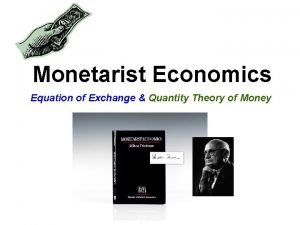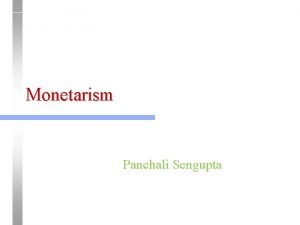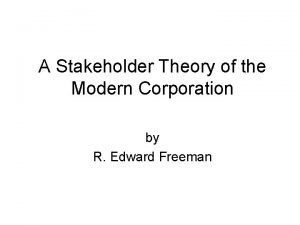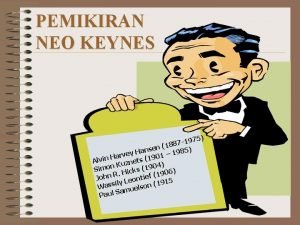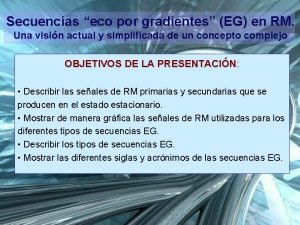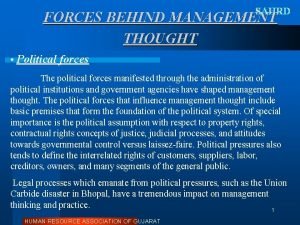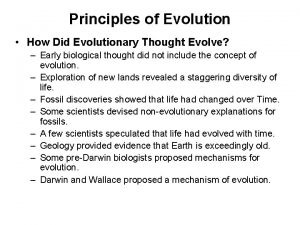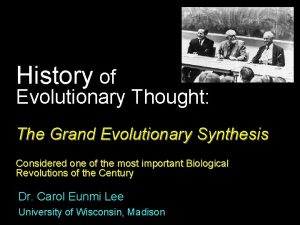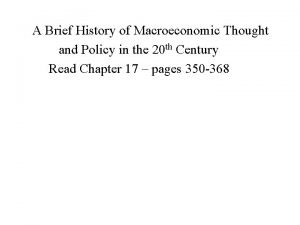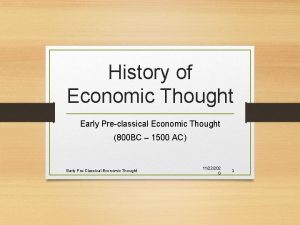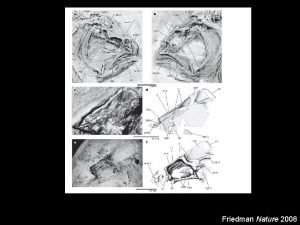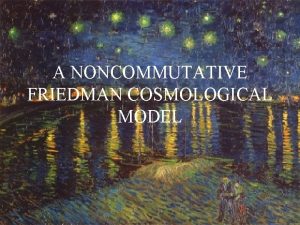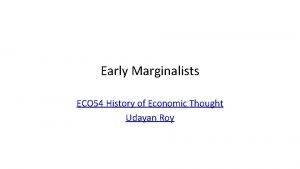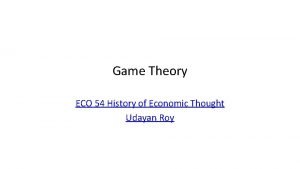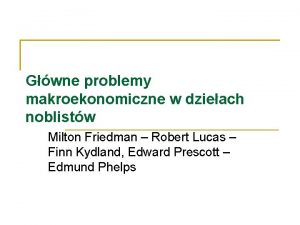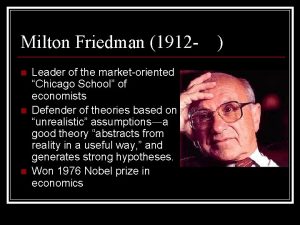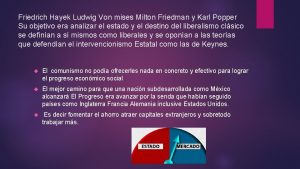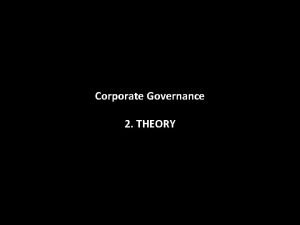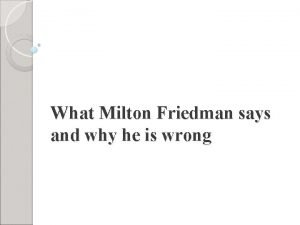Milton Friedman ECO 54 History of Economic Thought















- Slides: 15

Milton Friedman ECO 54 History of Economic Thought Udayan Roy

Milton Friedman (1912 -2006) • A Monetary History of the United States (1963), with Anna J. Schwartz • A theory of the consumption function (1957) • Selected Bibliography Milton Friedman 2

Permanent Income Theory of Consumption • Friedman argued that transitory changes in income do not affect consumption spending, only permanent changes do • This implies a small marginal propensity to consume and, therefore, a small multiplier. • This makes Keynesian fiscal policy ineffective Milton Friedman 3

Money affects output • Friedman argued that an increase in the money supply does have a positive effect on employment and production in the short run – This is because of “money illusion”. • Friedman argued that the Great Depression was probably caused by a sharp reduction in money supply by the US central bank, the Fed. • In the long run, however, the quantity of money affects the price level alone Milton Friedman 4

Monetary policy • Despite the effect of the money supply on output, there are lags that make monetary policy ineffective. – Observation lag – Decision lag – Effect lag Milton Friedman 5

Monetary policy • Therefore, monetary policy should follow simple rules and not try to adjust to shifting economic situations. – In particular, if an economy’s GDP normally grows at the rate of 3. 5% per year, then its central bank should increase the quantity of money at the same rate every year. – This will keep prices stable over the long run. – Friedman consequently favored the abolition of the Federal Reserve Milton Friedman 6

The Phillips Curve • A. W. Phillips (1914 – 1975) looked at British data between 1861 and 1957 and found an inverse relationship between the rate of wage increase and the unemployment rate • Paul Samuelson and Robert Solow argued in 1960 that the Phillips Curve was a guide to policy making: – A country could keep unemployment low forever as long as it was willing to accept a stable—but high—rate of inflation • Friedman pushed back Milton Friedman 7

Natural rate of unemployment • In the long run there is no tradeoff between inflation and unemployment. • Sustained attempts by the government to keep unemployment below the natural rate will lead to accelerating inflation – The argument emphasizes the importance of inflation expectations Milton Friedman 8

Flexible Exchange Rates • Friedman was among those who first realized - and could explain - why the Bretton Woods System with relatively fixed rates of exchange was bound to break down sooner or later. Milton Friedman 9

Libertarianism • Friedman was a vigorous participant in public policy debates – Had a weekly column in Newsweek, recorded TV documentary series, wrote popular books on economic issues – Legalization of drugs and prostitution – Volunteer army – School vouchers – Abolition of licensing requirements of doctors – Negative income tax Milton Friedman 10

Friedman v. Keynes • There are indications that Friedman was not as opposed to Keynesian stabilization policies as some may believe • Paul Krugman: – Friedman … commended instead then Chicago view that banks should be rescued, government should act to reflate the economy, and that there was a strong case “for the use of large and continuous deficit budgets to combat the mass unemployment and deflation of the times. ” – http: //krugman. blogs. nytimes. com/2013/04/14/milton-friedmancurrency-debaser/ Milton Friedman 11

Friedman v. Keynes • See also: – http: //delong. typepad. com/sdj/2013/04/its-the-seventiethanniversary-of-abba-lerners-functional-finance. html – http: //www. forbes. com/sites/timothylee/2012/04/02/miltonfriedman-inflation-dove/ Milton Friedman 12

Sources • http: //myweb. liu. edu/~uroy/eco 54/histlist/Friedman_M/index. htm • Chapter X of New Ideas from Dead Economists by Todd Buchholz • Chapter 13 of The Ordinary Business of Life by Roger Backhouse; pages 295 -8 • http: //www. hetwebsite. net/het/profiles/friedman. htm Milton Friedman 13

Sources • http: //en. wikipedia. org/wiki/Milton_Friedman • http: //www. nobelprize. org/nobel_prizes/economics/laureates /1976/ Milton Friedman 14

Milton Friedman 15
 Teori milton friedman
Teori milton friedman Mv= py
Mv= py Milton friedman quantity theory of money
Milton friedman quantity theory of money Milton friedman vs edward freeman
Milton friedman vs edward freeman Teori milton friedman
Teori milton friedman Secuencia fiesta en siemens
Secuencia fiesta en siemens Complete and incomplete thoughts examples
Complete and incomplete thoughts examples Forces behind management thought
Forces behind management thought Economic growth vs economic development
Economic growth vs economic development Economic development vs economic growth
Economic development vs economic growth Economics unit 1 lesson 2 difficult choices
Economics unit 1 lesson 2 difficult choices Ellis van creveld syndrome
Ellis van creveld syndrome History of evolutionary thought
History of evolutionary thought History of macroeconomic thought
History of macroeconomic thought Henri fayol
Henri fayol Uji friedman
Uji friedman

